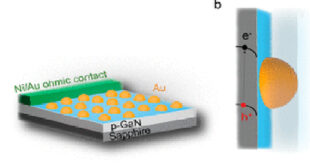Applied Physics A , September 2012, Volume 108, Issue 3, pp 671-677.
Biswajit Saha, Purushottam Chakraborty, Hubert Gnaser, Manjula Sharma, Milan K. Sanyal.
Surface Physics Division, Saha Institute of Nuclear Physics, 1/AF Bidhannagar, Kolkata, 700064, India
Fachbereich Physik and Institut fur Oberflächen- und Schichtanalytik, Technische Universität Kaiserslautern, 67663, Kaiserslautern, Germany.
Abstract
SiGe alloy, owing to its high electron and hole mobility, has potential applications in high-speed microelectronic device technology. The optimization of such technology requires the precise determination of Ge concentration in the full range of composition and the understanding and control of the Ge–Si interdiffusion phenomenon. The most appropriate analytical technique with highest detection sensitivity (∼subparts per billion) for measuring elemental concentration is secondary ion mass spectrometry (SIMS). However, strong compositional dependence of secondary ion yield, i.e. “matrix effect,” has always made SIMS quantification extremely difficult. A procedure for the accurate quantification of Ge concentration in molecular beam epitaxy (MBE)-grown Si1−x Ge x(0<x<0.72) alloys based on MCs+-SIMS approach has been proposed. The “matrix effect” is shown to be completely suppressed for all Ge concentrations irrespective of impact Cs+ ion energies. The novel methodology has successfully been applied for direct quantitative composition analysis of Si/Ge multilayer structure.
Additional Information
The authors wish to also highlight another work from their laboratory, the publication and an accompanied image are below:
Ion-Beam-Synthesized Colloidal Silver Nanoclusters in Crystalline Sapphire as Third-Order Optical Material
Authors: Anna Kozakiewicz, Binita Ghosh, Purushottam Chakraborty, Trevor Derry, S. R. Naidoo and Paul Franklyn
Journal: IEEE Photonics Journal 4, 205 (2012)
Silver ion implantation in single-crystalline sapphire has given rise to the formation of silver nanoparticle-sapphire composites, which have been imaged using transmission electron microscopy, and confirmed using linear optical absorption (as shown in the figure) and Rutherford backscattering spectrometry (RBS). Nonlinear refractive index and two-photon absorption of these nanocomposites have been observed using Z-scan and Anti-resonant Interferometric Nonlinear Spectroscopy (ARINS) in the close proximity of surface Plasmon resonance (SPR) wavelength of silver nanoclusters (~ 400 nm) and at ~ 807 nm, respectively. Both sign and value of the nonlinear parameters were determined, and the third-order optical susceptibility (c(3)) of the composites has been found to be significant. Such metal nanocomposites in glasses and sapphires having appreciable c(3) with temporal responses in picosecond to femtosecond time domain have great relevance to futuristic switching materials in nanophotonics.
 Advances in Engineering Advances in Engineering features breaking research judged by Advances in Engineering advisory team to be of key importance in the Engineering field. Papers are selected from over 10,000 published each week from most peer reviewed journals.
Advances in Engineering Advances in Engineering features breaking research judged by Advances in Engineering advisory team to be of key importance in the Engineering field. Papers are selected from over 10,000 published each week from most peer reviewed journals.


